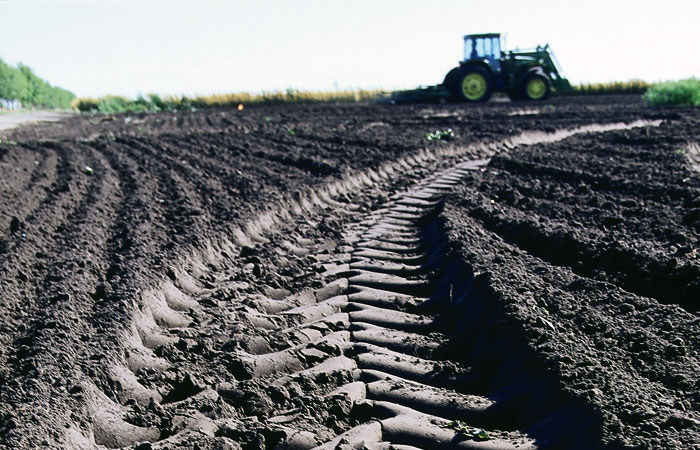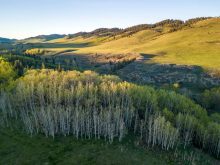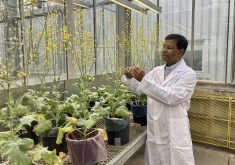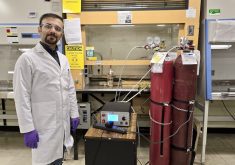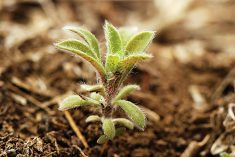Controlled traffic farming does improve soil, says a University of Alberta soil researcher who did his master’s thesis on the practice.

“In our area of the North American Great Plains, we have areas that are experiencing soil degradation and it is being propagated further as production systems are intensifying,” said Kris Guenette at the recent Controlled Traffic Farming Alberta conference.
About 33 per cent of soils across the world are classified as moderate to highly degraded, according to the UN’s Food and Agriculture Organization. By 2050, with an increasing population and use of current management systems, about 1.5 million hectares of land could be lost due to soil erosion.
Controlled traffic farming (CTF) is common in Australia and parts of northern Europe, but is rare here with just eight Alberta farmers employing this system. By running all their equipment on ‘tramlines,’ only 20 to 35 per cent of their fields see tire tracks (versus 60 to 95 per cent in a conventional farming system).
Read Also

Scouting for disease in canola crops
Inspecting your canola fields for early signs of disease can save you plenty of headaches in the long run.
“In a conventional trafficked system, the majority of the field is covered in traffic. In controlled traffic, the dominant soil type is untrafficked,” said Guenette.
In addition to greatly reducing compaction, sticking to what are essentially mini roadways reduces fuel usage, emission, and soil degradation while increasing yields.
However, since most producers are coming from a conventional system, assembling a fleet of equipment with uniform axle widths is challenging. Moving to controlled traffic farming usually means modifying equipment or slowly replacing machines with ones with the same axle width.
As part of his thesis, Guenette assessed the farms of the eight producers using the controlled traffic system, and looked for changes in soil quality and how their fields compared to those in conventional traffic systems. (The farmers, all co-operators in a CTF trial, had been using the system from one to five years and were located in different soil types.)
Guenette took soil samples at different depths from tramline sites and areas that weren’t travelled by equipment. The latter were better able to absorb and hold water and had improved soil structure.
He also found “tramlines can create little roadways for soil erosion to occur,” but the non-compacted areas next to them were able to handle large amounts of water. While all eight sites saw soil improvements, those with black-grey luvisol or black chernozem soils displayed the greatest improvements and were in better shape than comparable soils subject to random equipment traffic. Major improvements in soil porosity occurred within the first two years of CTF implementation, while soil structure took longer to improve.


